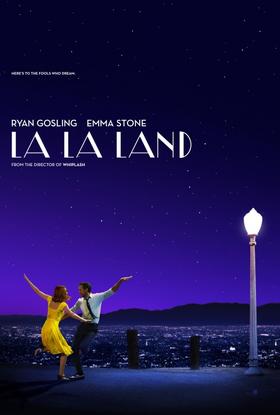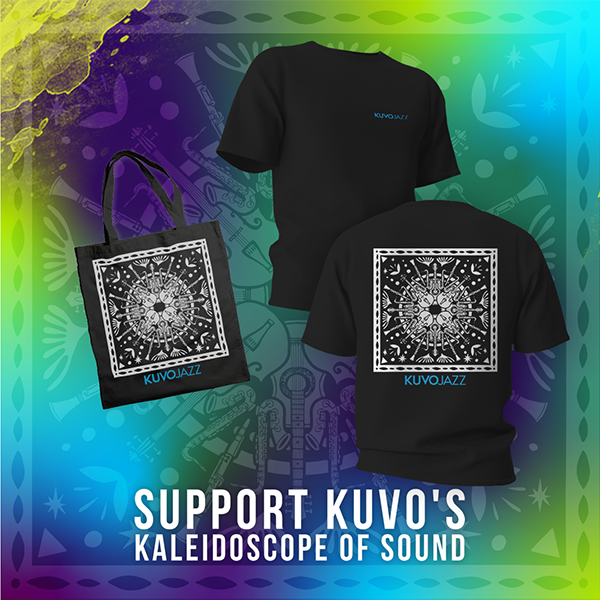Jazz on Film: La La Land – We are the ones who dream

The film begins with an opening scene familiar to L.A. residents. A gridlocked freeway on a bright sunny day has motorists stepping out of their cars, but in “La La Land,” they burst into a song and dance number in celebration of the day. There we meet the soon-to-be lovers, Mia and Sebs (Sebastian). But at this moment Mia is rehearsing for an audition and Sebs honks in frustration and pulls ahead while she gives him the finger.
Like all romantic musicals “La La Land” (2016, written and directed by Damien Chazelle) slides between fantasy and reality. “La La Land” paints its actors in spectacular primary colors and the town in gorgeous pastels. It uses the camera as another actor, almost dancing across the scenes. We get to feast on sunset vistas, retro clothing and cars, Hollywood backdrop sets, as well as iconic images and scenes of the town famous for where dreams are made and sometimes broken. The director treats us to an homage to old Hollywood movies inside a contemporary story. Especially savvy viewers may catch the many specific references Mr. Chazelle makes to other historic films.
Mia is a wannabe actress whose connection to Hollywood is principally her job as a barista on a movie lot and an attendant at parties. She auditions where there are dozens of young women just like her (perhaps prettier) and where she is ignored and dismissed in the few seconds she is permitted to act. Sebs is a jazz pianist, stubborn and sworn to defend “real jazz” and lament its loss in today’s society. Despite experiencing the lows that the real world delivers, both Mia and Sebs are dreamers, desiring the shiny futures they imagine, now made more shimmering because of finding each other.
We follow their courtship and the tensions that grow out of Mia’s frustration with her career and Sebs’ aimless idealism towards his music. The film is structured around the seasons and we see the lovers’ relationship grow in the vibrant colors and fun backdrops.
(PLOT SPOILERS IN THIS PARAGRAPH) Mia accidentally wanders into a restaurant where Sebs is forced to play cheesy Christmas music. He can’t help himself and has to play one of his own, the result being he is immediately fired. This is the only tune Mia hears and as she steps to speak to him about how it moved her, he rudely rebuffs her. Their next meeting is a Hollywood Hills party where Sebs is now part of an 80’s cover band. Mia recognizes and embarrasses him with a request for the Flock of Seagulls’ I Ran. But that also begins their actual relationship that is shaped by witty banter, moving across vintage L.A., and of course song and dance. Sebs can’t be with a woman who doesn’t love jazz and Mia confesses she doesn’t. Immediately he takes her to a club to hear the real thing where she pushes him to explain what about the smooth jazz station she grew up hearing as the background soundtrack to parties in her hometown. He makes an impassioned counter that what they are hearing is “authentic” jazz, and right here is an example of conflict and compromise, invented anew in each moment. The irony of him talking over such creativity is lost on the director.
(A COUPLE MORE PLOT SPOILERS IN THIS PARAGRAPH) One fabulous scene is their private dance inside the Griffith Planetarium. Sebs wants to open his own club featuring real jazz but has no idea how to get there. Instead, he takes a job in a band fronted by old friend (John Legend) playing jazz-tinged pop music. It’s good money and security but keeps him on the road and away from Mia, and provides no artistic joy. Fed up with auditions, and at Sebs’ urging, Mia writes and mounts a one-woman play but few attended. Fed-up with rejection Mia moves home to Nevada only to have Sebs appear with news that a director saw her play and wants her to audition personally. This stroke of luck completely turns her life around, but in the final act, also pulls the two permanently apart. The epilogue revisits their relationship with a gorgeous montage of what was and what might have been. (END SPOILER ALERT)
Mr. Chazelle has an affection for jazz. His first film, “Madeline and Guy on a Park Bench” was also a musical and Guy was a trumpeter. His recent film “Whiplash” centered around a freshman drummer trying to be the best in a prestigious music conservatory. The music in “La La Land” is a mixture of big band arrangements for the dance numbers, in the spirit of Fred Astaire and Ginger Rogers, and some post-bop and modern solo and small group arrangements. His collaborator Justin Hurwitz knows what he’s doing. It’s fun to listen to and there was more jazz than expected. Sebs’ mission is to save jazz from dying in an uncaring world. A noble ambition but also a bit lame to have a young white protagonist as the self-avowed savior of what was originally an African-American art form. At one point his friend Keith tells Sebs, “You’re obsessed with Kenny Clarke and Monk. Those guys were revolutionaries. How are you going to be a revolutionary if you’re a traditionalist? You’re holding onto the past, but jazz is about the future.” These are philosophical arguments we explored in an earlier review (Icons Among Us: Jazz in the Present Tense). Jazz today is incredibly expansive with room for both traditionalists like Jazz at Lincoln Center and Houston Person as well as forward thinkers Jason Moran and Kamasi Washington, even if it isn’t anywhere near as popular as it was in Fred Astaire’s time.
It’s interesting that both Mia and Sebs’ relationships to their arts seem most at home while pursuing them in isolation. Mia’s big break comes only after she writes and mounts her one-woman show, presumably with no help from anyone else. And Sebs is most content playing his own compositions as solo piano, and not interacting with other musicians. This is not a slight against the film which is highly entertaining and is wonderful to look at and listen to. As the title suggests, “La La Land” is ultimately about dreams and dreamers, and as the film’s dreamers Ryan Gosling and Emma Stone deliver real screen chemistry. It is also a big musical and so it pays to skip too much logic or criticism and let the magic of movie making take you where it will. The fact that it also has some fine jazz in it is the cherry on top of a sweet tasting experience.
9(MDA3NDU1Nzc2MDEzMDUxMzY3MzAwNWEzYQ004))
Become a Member
Join the growing family of people who believe that music is essential to our community. Your donation supports the work we do, the programs you count on, and the events you enjoy.
Download the App
Download KUVO's FREE app today! The KUVO Public Radio App allows you to take KUVO's music and news with you anywhere, anytime!
